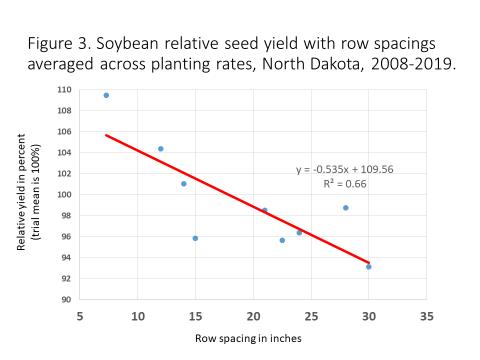“All good
things eventually come to an end... The
thing that I loved the most about Larry Bird was that he was motivated by pride.”
– Red Auerbach; legendary coach and President of the Boston Celtics while reminiscing
after the retirement announcement of Bird
Pioneer® and Corteva® have recently made the
announcement and implementation to restructure their local field teams across
the country. It seems like every couple
of years, significant changes get executed by these large world-wide businesses. These changes do affect the company’s employees,
but the goal is to minimize the effect to local customers. The employees eventually adapt, adjust and
continue to move forward by working hard to service customers and test/position
products for performance in local geographies.
Today’s changes at Corteva® will be good for the long run as we align our
local teams to become closer to the customer with the goal of driving profitability
at a greater rate of return for our overall business.
Often times, these changes come at the corporate
upper management level, but this time around, they’ll have a bit more impact on
our local relationships. For many of
you, things will not change as I will remain as your primary Pioneer contact
outside of your local Pioneer sales agent.
However, some of you will have a new Pioneer representative. I will work closely to ensure that the
transition is as smooth as possible. In
many cases, I’m sure the “new” Pioneer individual will be able to assist your
operation to greater and deeper lengths.
With my duties and role slightly changing, I’ll
make this edition of “Yield & Profit” my last. I’ll most likely find a way to continue to communicate
regional agricultural happenings, but I’m not sure today how that will exactly look.
Hopefully over the past couple years of reading
my newsletter, you gained a bit of fondness for the game of basketball, maybe
even felt some entertainment, learned some additional bits about agriculture (or
other things), and most importantly, found some new resources and/or ideas to
implement or utilize to improve your business.
Regional Weather
The weather continues on its
inconsistent trend that we’ve witnessed since mid-February. Two weeks ago, we had morning frost events,
last week we had 100F high temps and some local hail, so it’s hard to fathom
what will happen next.
For the corn GDD calculation, the
maximum base temperature in the calculation is 86F, and warm night-time temps
greatly assist the accumulation rate.
Therefore, we’ll see about 22-23 GDD’s per day or about 155 GDD’s for
the week if the forecasted temperatures hold true.
I’ll count on your weather app for
the best guidance through the 7-8 day forecast, but looking beyond that, I’ve
found this site from National Oceanic Atmospheric Association (NOAA) to be
fairly reliable for a general 8-14 day outlook (next week): https://www.cpc.ncep.noaa.gov/products/predictions/814day/index.php
For the third week of June, the
forecast for our region looks to have strong potential for above average temperatures
and below average precipitation.
The
NOAA organization also provides three-month outlooks. If we would like to get a general feel for the
upcoming late summer to autumn season (Aug-Sept-Oct), it can be seen here: https://www.cpc.ncep.noaa.gov/products/...seasonal.php?lead=3
This
forecast currently predicts slightly above average temperatures and below average
precipitation potential for most all of North Dakota. Minnesota will trend to “EC” or equal chances
on the precipitation forecast. I guess it
is common to have below average precipitation when the temperatures are
trending well above average.
USDA Crop Progress Report
As the US crop is now planted, you can
take a look around the country to see how the crop is developing according to
the USDA. It’s still early in the growing
season, and we should wait until at least July before we can note any weather
trends that will impact markets.
USDA’s next WASDE (World Agriculture
Supply Demand Estimate) report will come this week on June 10th.
If you’d like to see the USDA’s agricultural
reports, they can be viewed at this site:
https://usda.library.cornell.edu/concern/publications/8336h188j
Corn Crop Development
With the mid-point of corn planting as May 5th
for the region, the following GDD map below shows growing degree day
accumulation for the 2021 season to date. If your operation planted corn around the 25th
of April, you can add about 60-70 GDDs to these totals for your first planted
fields. Conversely, if you planted corn
around May 15th, you can subtract about 60-70 GDDs.
With the frost event of May 27/28th, some corn fields experienced a bit of set-back, but the corn seems to be recovering alright. In general, with all the heat units we have accumulated, I would think the corn would look better. We still have many fields at V2-V3 and the crop seems slow to respond to all the heat. My only logical reasoning: the inconsistent air temps have created enough variability around soil temperatures to prevent the crop from fully adapting to its environment. Hopefully, the weather will stabilize and some moisture will fall so the plants can get into a pattern of maximizing resources to strive.
The following web site from Perdue University
describes corn development based on GDD’s as the crop progresses through the
vegetative stages. From VE to
approximately V10, it takes about 80-85 GDD’s per leaf stage. Corn emergence typically will take around 125
GDD’s in our northern latitudes.
https://www.agry.purdue.edu/.../timeless/VStagePrediction.html
Area Weed Control
Just
like the crops, the weeds seem very slow as well this season – especially the
broadleaf weeds. Weed control is always
a challenge when conditions are not ideal and I’m already hearing reports of
some early season glufosinate (Liberty®) that performed very poorly despite the
ample sunshine and heat.
The
only recommendations to implement that I can think of are three-fold: maximum
rates of herbicide, strong adjuvant loads (move to MSO or Crop Oil when allowed
by the label to get better leaf cuticle penetration), and use higher water volumes
per acre. These tactics take longer to
implement, but the cost of poor weed control is immeasurable.
FSA and Granular Insights
Corteva’s® digital team of experts is
bringing a new service to farm managers starting here in 2021 – FSA acreage reporting. For operations who have a Granular Insights
(GI) account set-up with their farm’s as-planted data placed into the GI
software, Granular professionals will complete your operations FSA 578 form. The cost is $0.25 per acre with a $1,000
maximum cost per report. For large
operations running over 5,000 acres, this is a very good value.
Please contact myself or your local Pioneer
sales agent to set-up or confirm your Granular Insights account. Granular Insights accounts can easily be started
with a link to your John Deere Operations Center, or we can import Field View (or
other machinery) data.
If you already have your Granular Insights
account set-up and active, you can contact Granular at 833-933-1733 (option 6)
or e-mail (agronomyproservices@granular.ag) to learn
more about this service offering.
Drought Effects in the Early Summer
Even though we had a nice rain a couple weeks
ago, the current heat wave has created a lot of soil evaporation and thus it’s
surprising how quickly the moisture has dissipated. Pioneer’s Agronomy Sciences team has placed
together an excellent Crop Focus article on the topic of early season drought
stress in corn as the concern for dry conditions has spread throughout the Northern
Plains.
This article reviews the critical growth
stages of the crop, the estimated yield loss per day under significant stress,
and impacts of drought on the growth and development. One bit of management we can implement at
this stage of the game is to insure potassium availability. On of potassium’s critical functions in the plant
is to regulate the function of plant stomata – the physical plant apparatus that
allows gas exchange (CO2 and Oxygen) as well as transpiration (water movement
out of the plant).
Potassium in the soil under dry conditions will
bind more tightly to soil particles and thus be less available for plant uptake. Plants with insufficient potassium levels
will be slower to open and close their stomata and thus more susceptible to
drought affects.
I could not find any relevant research over
the web for the application of liquid potassium or dry potash in corn with side-dress
applications to aid production under dry conditions. However, I would think that the addition of
potassium with nitrogen in these scenarios would help considerably – especially
where soil test K is in the 200 ppm and less range and yield history above
150-160 bu/ac. Feel free to contact me
if you would like to implement a small trial on your farm.
https://corteva.showpad.com/share/KneJPIxx9MJqvEvMdvzvL https://plantphysiologyblog.com/2018...the-importance-of-stomata-2/
Random Agricultural Facts
With the drastic inconsistent weather
we’ve experienced lately, I pondered if there were any weather records of note
outlining such temperature extremes. And
wouldn’t you know it… the most extreme change in weather over a 24-hour period is
documented in my favorite state – Montana!
When evaluating temperatures from
cold to warm, Loma, MT (in the eastern part of Montana’s “golden triangle”
area) has experienced the greatest temperature change on record (worldwide) over
a one-day time span. The event occurred on
Jan. 14th and 15th in 1972. The morning of Jan. 14th started
out bitterly cold for Loma residents as the 9 am temperature reading was
-54F. A warm chinook wind ensued coming
from the west off the Rocky Mountains and the temperature started
climbing. By 8 am the next day, the
temperature had risen to a balmy 49F above – a swing of 103 degrees Fahrenheit!
If you would like to know what
the greatest drop in temperature would be over the same time frame (24-hours),
well, that occurred in Montana as well.
Residents of Browning, MT (just off the Rocky Mountains on Hwy 2) back
in January of 1916 were enjoying a nice 44F day before a cold front started to
pass through the area. The cold front
was so intense, that by the middle of the next day, the temperature had dropped
to -56F – a change of 100oF!
If you like stories and history concerning
the weather, have a gander at this link and you’ll read some very interesting weather
developments and extremes: https://www.wunderground.com/cat6/extreme-short-duration-temperature-changes-us
https://ams.confex.com/ams/annual2003/techprogram/paper_54387.htm





























